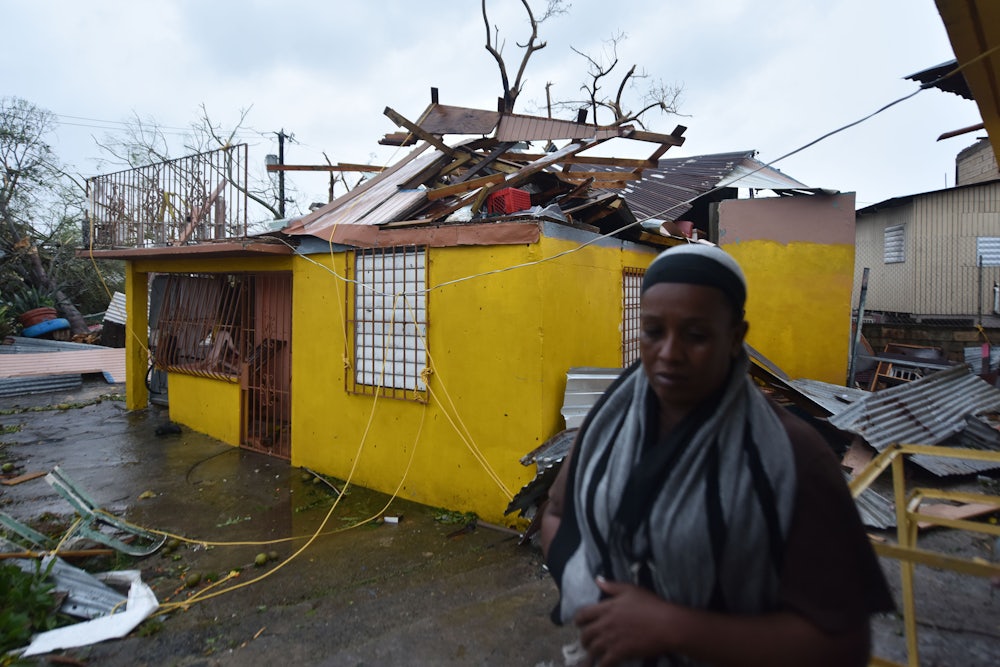Puerto Rico—which most people apparently don’t know is a U.S. territory, home to 3.4 million fellow citizens—was hit directly by Maria’s 140-mph winds and torrential rains on Wednesday, knocking out 100 percent of power on the island. The full extent of damage will likely be unknown for weeks, but here’s what we know so far.
- Some areas are literally demolished. “The sectors Cucharilla, Puente Blanco, La Puntilla, are destroyed,” said Felix Delgado, mayor of Cataño, a municipality just south of San Juan that’s home to approximately 28,000 people. Residents across the island reported windows exploding with the force of the winds. Patients in two hospitals had to be moved after flooding and shattered windows. The island’s main airport has “been rendered virtually unusable.”
Imágenes de daños del @AeropuertoSJU
— Radio Isla 1320 (@radioislatv) September 20, 2017
Fotos por: Martha Baez #HuracanMaria pic.twitter.com/G5kL6C17Tu
- There’s already at least one major and unique threat of pollution. As with any hurricane, spills of petroleum products and raw sewage are to be expected. Those are already starting to materialize; a firefighter told the island’s largest daily newspaper, El Nuevo Dia, that he saw 550-gallon gas tankers flying through the air. And because all of the island’s sewage pumps run on electricity, they’re likely compromised. The Puerto Rico Aqueducts and Sewers Authority suffered “serious damage,” reportedly leaving 220,000 without service.
The unique threat comes from a five-story pile of contaminated coal waste that usually sits out in the open in Guayama, a town of 45,000 in southern Puerto Rico. The company that owns the pile, Applied Energy Systems, was ordered to cover and secure the humungous mound of arsenic-laden ash earlier this month, before Hurricane Irma hit the island. The company refused, and was fined $25,000. It’s unclear if AES, which did not return multiple requests for comment, covered the waste before Maria. Hopefully it did, because here’s footage of the winds and flooding in Guayama:
This #Maria footage is from Guayama, Puerto Rico —The same town where an uncovered, 5-story pile of toxic coal ash sits pic.twitter.com/qB0w8lTsMQ
— Emily Atkin (@emorwee) September 20, 2017
And these are the winds in Guayama, via @EpochTimes
— Emily Atkin (@emorwee) September 20, 2017
The prognosis for this coal ash pile doesn't seem very good. pic.twitter.com/D3vQFILdbB
- Flooding is widespread and life-threatening. According to El Nuevo Dia, seven out of eight floodgates of the Carraízo Dam were opened, as well as some others. Three major rivers have reportedly broken their banks. The northeastern municipality of Rio Grande, home to 54,000 people, is “practically underwater.” There’s widespread flooding in San Juan as well.
President Donald Trump has declared Puerto Rico in a state of emergency, but he has not declared it a disaster zone, which would free up more federal funds for recovery. Based only on these initial known impacts, it’s clear that beleaguered Puerto Rico will need a lot of help from its fellow Americans.
